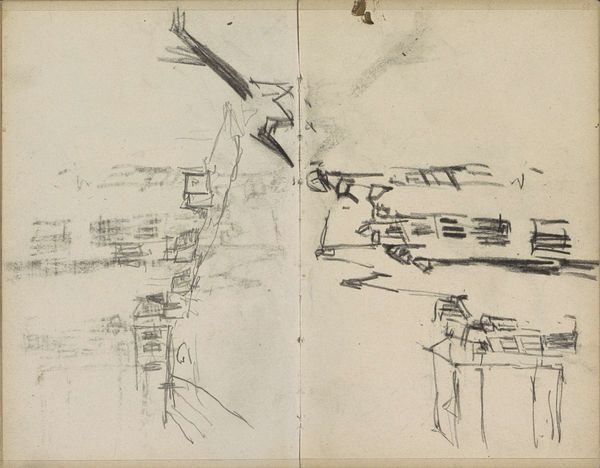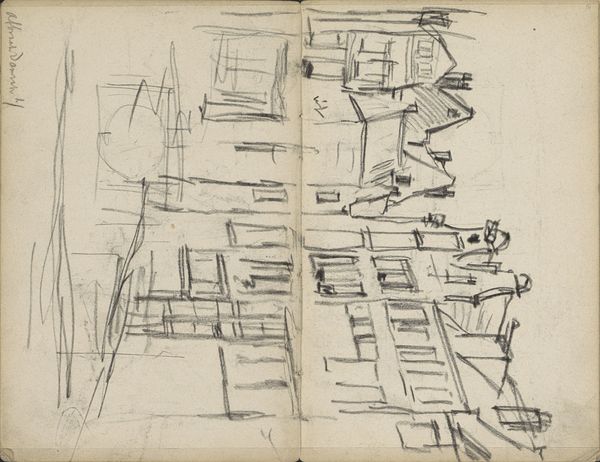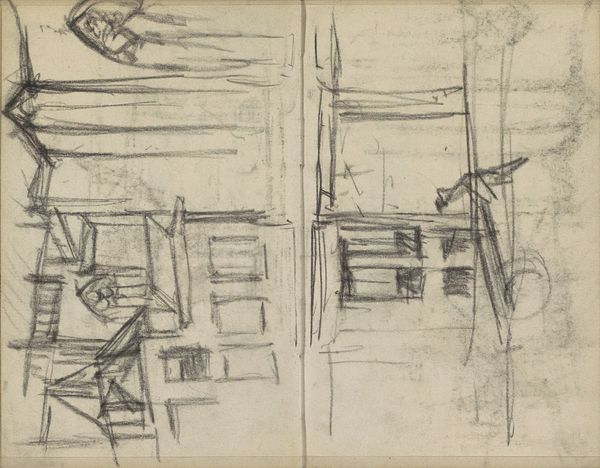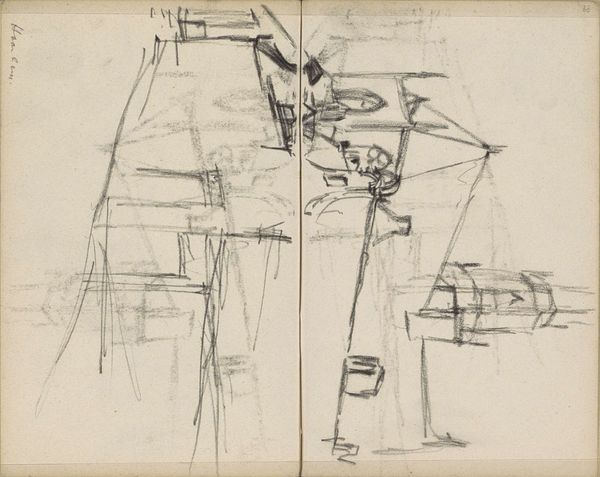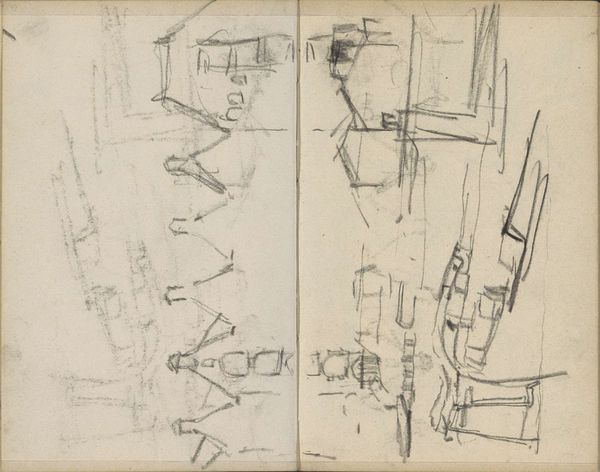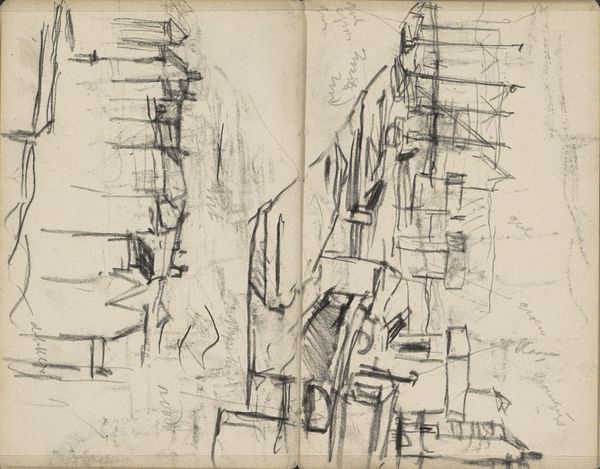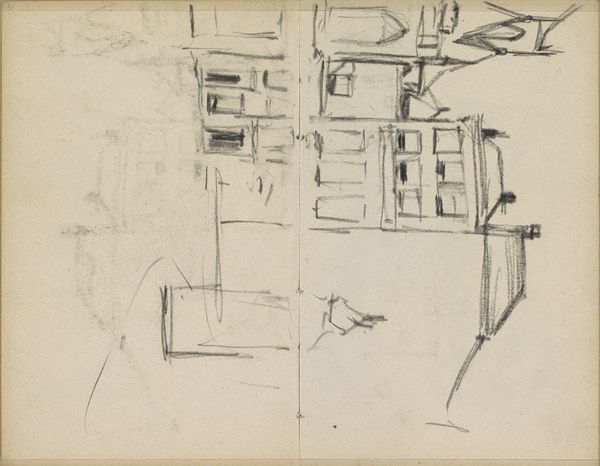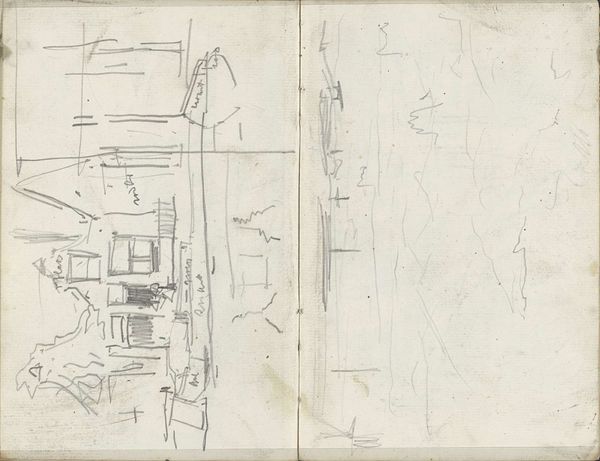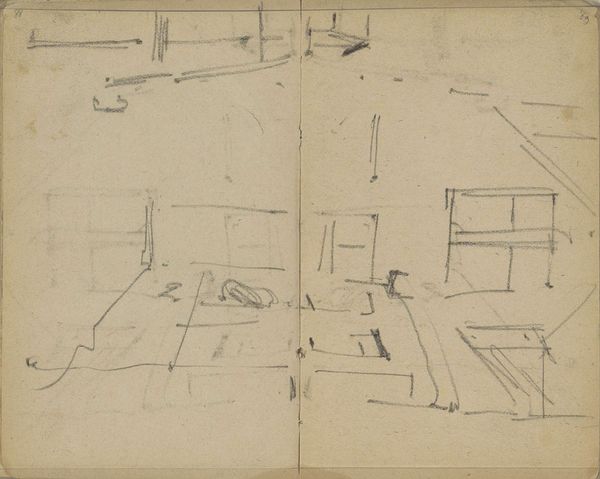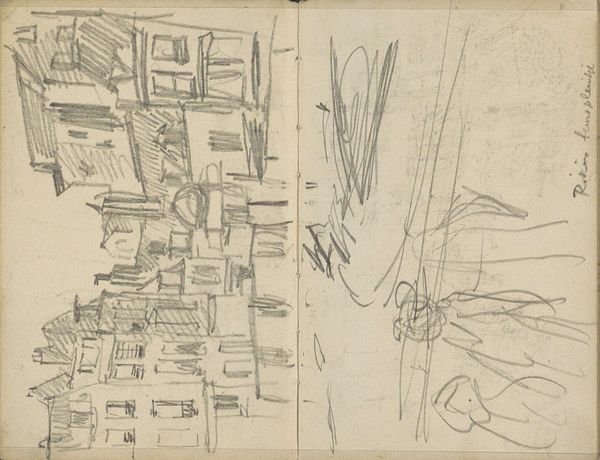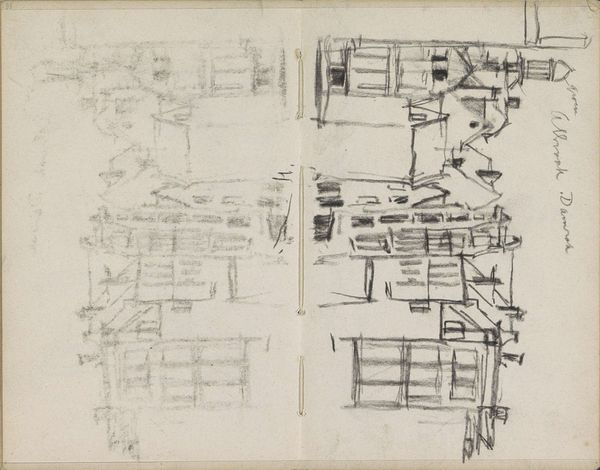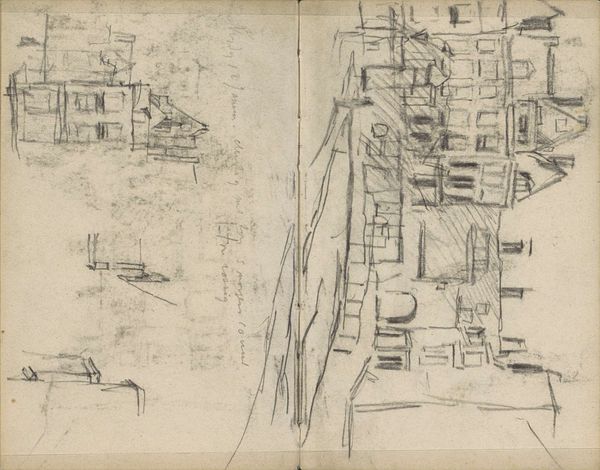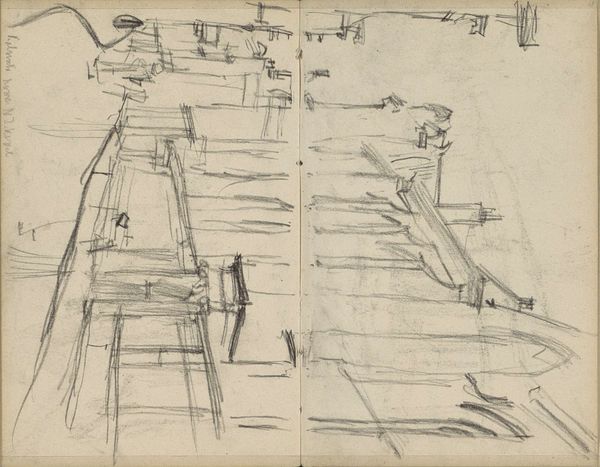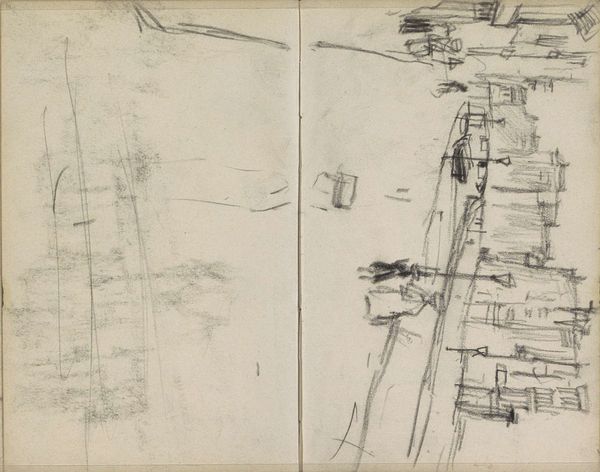
Copyright: Rijks Museum: Open Domain
Editor: So this is George Hendrik Breitner's "Gezicht op het Damrak te Amsterdam," circa 1902. It looks like pencil or ink on paper. It feels…fragmentary, almost like a half-remembered dream of a city. What do you see in this piece? Curator: It is more than a simple record; it's an exercise in visual language. The stark geometric forms can be interpreted as symbols of modern urban life emerging. Think about the period: Amsterdam was rapidly transforming. Editor: So, these fragmented forms...they're not just stylistic, but reflective of the changing city? Curator: Precisely. Notice the repetition of rectangular shapes, which signify both windows and perhaps the constrained lives within those buildings. The sketchiness itself becomes symbolic – a city always under construction, never truly complete. What stands out for you when considering the lack of detail? Editor: It’s like Breitner is capturing the *idea* of Amsterdam, not the concrete reality. Maybe he’s more interested in the psychological impact of the city? Curator: A keen observation! This evokes memory, right? Not a photographic likeness, but the fleeting essence. And notice, no people. Where have all the people gone? Editor: That’s true. It gives it a feeling of isolation. Like an abandoned stage set, waiting for the players to arrive. I guess I had only looked at the pure artistry without digging into its social commentary. Curator: Precisely. The symbols resonate beyond the purely visual, speaking to the human condition amidst urban expansion. Every deliberate choice invites layered contemplation.
Comments
No comments
Be the first to comment and join the conversation on the ultimate creative platform.
